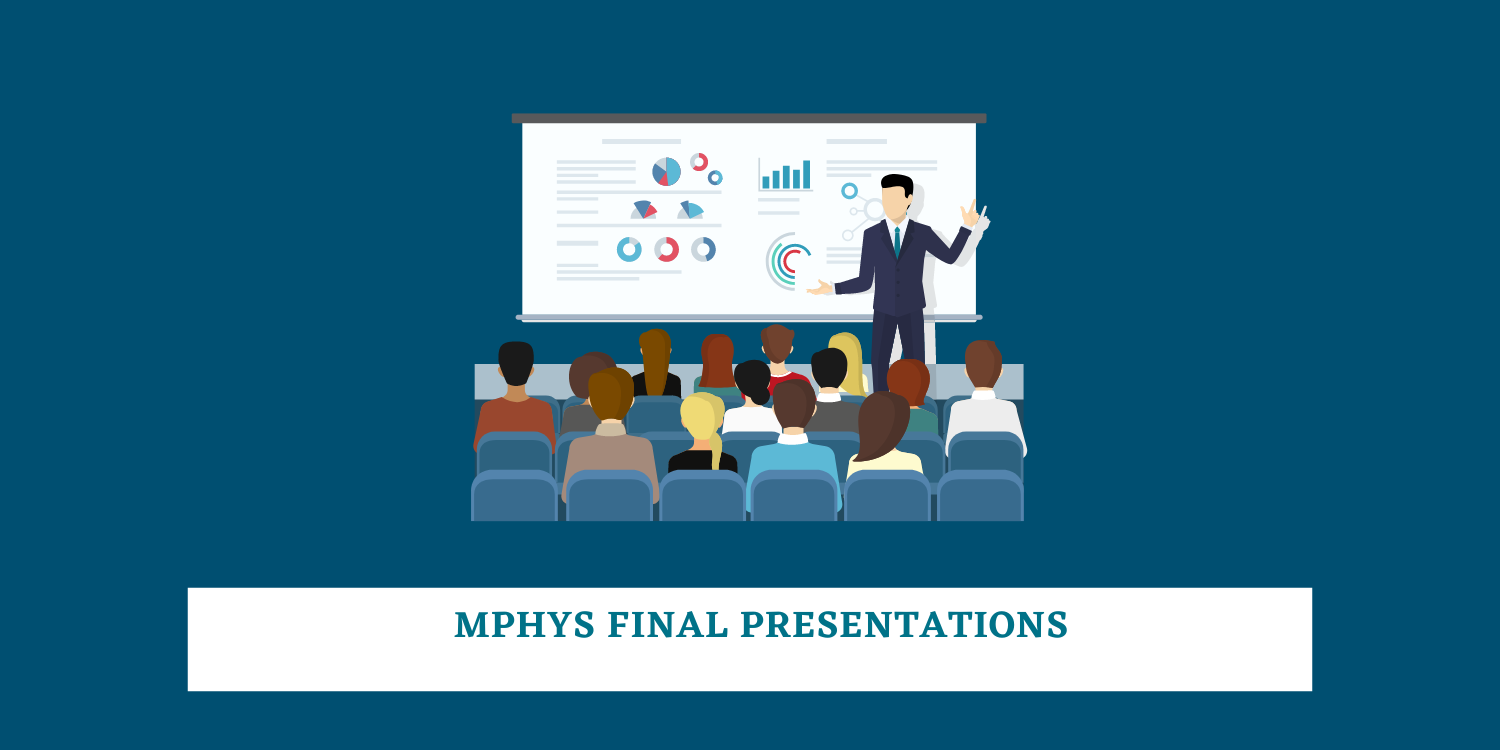It’s the end of the semester and almost time for the MPhys students to share their work at the end of year presentations. These presentations are open to anyone to attend, so if you’ve been considering an MPhys year or are interested in learning a bit about the current research being undertaken, why not go along? I spoke to two students about their research projects to get an idea of what to expect.
Robert Peal’s project, ‘Biological particles propelled by planetary atmospheric vertical winds’ was undertaken in collaboration with the Leibniz Institute of Atmospheric Physics at the University of Rostock.
Can you give me an overview of your project?
“I am analysing a new dataset of measurements of vertical winds in the upper Mesosphere- lower thermosphere (Altitudes between around 80-100 km). This region is sometimes known as the “ignore-osphere” because it is not possible to make in-situ measurements so it is very difficult to study, and therefore the dynamics of the region are poorly understood (It is too high for weather balloons to fly there but too low for satellites to maintain stable orbit.).
However, it is possible to observe the region from the ground using radars. Recent measurements have found much faster upper-level winds than was previously expected (up to 60ms-1 – hurricane speeds!). In my analysis, I am attempting to show whether these high-speed winds are reliable or not.”
That all sounds fascinating, can you tell me more about the nature of the collaboration with the Leibniz Institute?
“My data were made using radar networks in Peru and Germany, which estimate the upper-level wind by measuring the drift of meteor tails using the Bragg scattering vector and Doppler shift of the light they scatter. The data have been provided by the Leibniz Institute of Atmospheric Physics at the University of Rostock, who are at the forefront of mesosphere lower thermosphere research and operate several radar networks around the world for this purpose.
As well as using data from the Leibniz Institute of Atmospheric Physics, I have also had the chance to work with Jorge Chau, who works at the institute, and is one of the leading researchers in this field. He developed the radar networks that collected the data that I am now using.
Working with Jorge provided me with a better understanding of the data processing techniques used to convert the meteor detections into wind measurements. This gave me ideas on how the processing might affect the distribution of measurements. He also gave insightful suggestions for certain features in the data he thought I should study in more detail to better understand the extreme events.”
What a great experience! What do you feel you have gained from this project?
“The experience working with Jorge and having access to these exciting new measurements has piqued my interest in the field of remote sensing, and I am now hoping to pursue a career in this area. The collaboration has given me an extremely useful contact in the field as well as ideas about how to pursue my interest.”
Fraser Lowe’s project, “Searching for CP Violation in charm meson decays” was carried out using data collected at CERN.
Can you give me an overview of your project?
“Matter anti-matter asymmetry remains a major open problem in particle physics and cosmology. The asymmetry (CP violation) observed in nature is far larger than predicted by the Standard Model and so alternative sources of CP violation must be found. Using data from the LHCb detector we consider the decay of a charm meson and its anti-particle and optimise an asymmetry test to search for this CP violation. ”
Very interesting! Can you tell me a bit more about the nature of the collaboration?
“The data we use throughout the investigation were detected at CERN’s LHCb detector, one of the particle detector experiments currently in operation at the LHC. Analysing the data, we made use of CERN’s ROOT computing environment and various packages associated with them such as AmpGen – which allowed us to inject asymmetry into the data and investigate the performance of our test. ”
Sounds like this project was a great opportunity, what do you feel you have gained from this project?
“Being a small part of a collaboration like the LHCb Collaboration has been extremely rewarding. You get to see first hand how collaborative science is done. I have been fortunate enough to work with data only a small group of scientists have access to and have, through the collaboration, been given the opportunity to present my findings to an international team of experts. Whilst, most importantly, being an incredibly exciting and interesting project – these experiences will also help in applications for both PhDs and graduate jobs. ”
MPhys Project Presentations take place during the last week of semester 2.



